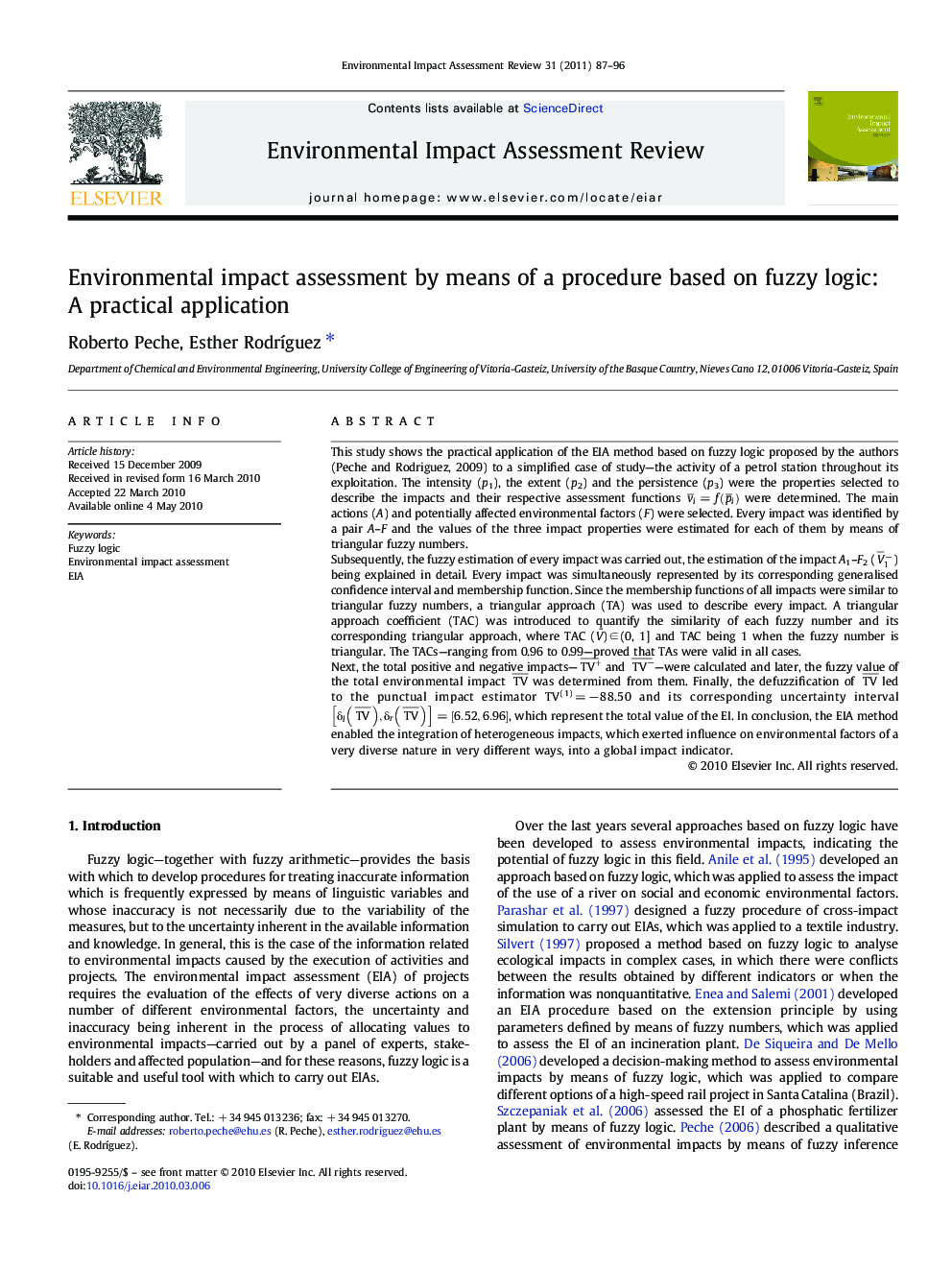| Article ID | Journal | Published Year | Pages | File Type |
|---|---|---|---|---|
| 1052998 | Environmental Impact Assessment Review | 2011 | 10 Pages |
This study shows the practical application of the EIA method based on fuzzy logic proposed by the authors (Peche and Rodriguez, 2009) to a simplified case of study—the activity of a petrol station throughout its exploitation. The intensity (p1), the extent (p2) and the persistence (p3) were the properties selected to describe the impacts and their respective assessment functions vi¯=f(pi¯) were determined. The main actions (A) and potentially affected environmental factors (F) were selected. Every impact was identified by a pair A–F and the values of the three impact properties were estimated for each of them by means of triangular fuzzy numbers.Subsequently, the fuzzy estimation of every impact was carried out, the estimation of the impact A1–F2 (V1−¯) being explained in detail. Every impact was simultaneously represented by its corresponding generalised confidence interval and membership function. Since the membership functions of all impacts were similar to triangular fuzzy numbers, a triangular approach (TA) was used to describe every impact. A triangular approach coefficient (TAC) was introduced to quantify the similarity of each fuzzy number and its corresponding triangular approach, where TAC (V̄) ∈ (0, 1] and TAC being 1 when the fuzzy number is triangular. The TACs—ranging from 0.96 to 0.99—proved that TAs were valid in all cases.Next, the total positive and negative impacts—TV+¯ and TV−¯—were calculated and later, the fuzzy value of the total environmental impact TV¯ was determined from them. Finally, the defuzzification of TV¯ led to the punctual impact estimator TV(1) = −88.50 and its corresponding uncertainty interval δlTV¯,δrTV¯=6.52,6.96, which represent the total value of the EI. In conclusion, the EIA method enabled the integration of heterogeneous impacts, which exerted influence on environmental factors of a very diverse nature in very different ways, into a global impact indicator.
